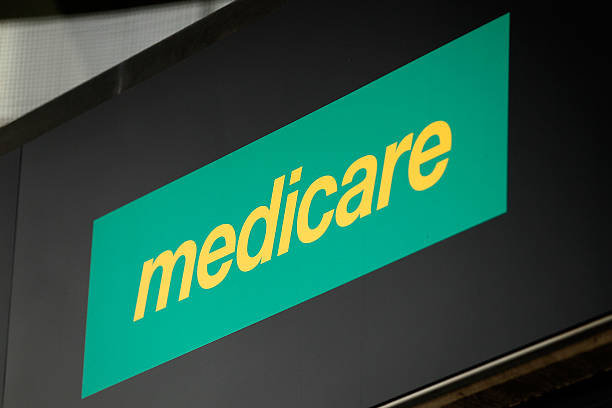How good is a race!
In the Current Health Policy Stakes, Covid-19 is still distancing all other runners. Back in the pack Men’s Health Week has been promoted to a spot on the rails, but it is the stayer Out-of-pocket Costs that takes the eye. His half-brother, Costs Paid by Patients for Surgery, is well placed, while Mental Illness seems to be finding the going tough. Remote General Practice (by Wayside Chapel out of ABC News Breakfast) is surprising her critics. However all of these, which are in effect racing for second place behind the pandemic, have an eye on Changes to Medicare. This experienced old galloper is threatening with a run down the middle of the course.
——–
A complex system
The system of payment for medical treatment in Australia is fiendishly complex. Before we set out on a brief explication, it will be useful to remember that doctors are Business People, specialists are Big End of Town Business People, and insurance companies have commercial interests that span the divide between patient and specialist.
Another significant divide is between those who have private health insurance and those who do not. Only families who might be described as ‘middle-income and above’ can afford private health insurance, which reflects some of the growing inequality among Australian families. Families with low incomes have free access to the services of a public hospital, including for surgery, but are merely bystanders to the private health system.
The proposed changes currently being implemented do not pose a threat to the general principles of Medicare, which are to give all eligible persons the choice to receive, free of charge: the services provided by public hospitals; no-cost or low-cost services from general practitioners and certain medical specialists; and no-cost or low-cost access to medicines listed on the Schedule of Pharmaceutical Benefits. So, experienced though she is, Changes to Medicare should not end up in the winner’s circle.

Medicine means business
Medicare pays a significant amount towards the costs of surgery, regardless of whether the patient has private health insurance or not.
Every particular surgical procedure has a ‘descriptor’ and a standard cost (or fee) struck by the government. Each descriptor defines precisely what the item entails.
The list of descriptors and standard costs is the Medicare Benefits Schedule (MBS). If the procedure is undertaken on a public patient in a public hospital they will have no out-of-pocket costs. The provider (the hospital and surgical team) will in effect earn just the schedule fee.
There are two critical factors in determining how much a patient will pay for surgery. First, each surgeon has the right to charge whatever fee they wish. They are not bound by the standard fee set for the MBS. Second is the patient’s choice of insurer and that insurer’s arrangements with the surgeon who does the job.
So, for example, if the surgeon sets their fee for a particular procedure at 120% of the schedule fee, the MBS will pay 75%, the insurance company 25%, and the patient 20% from their own pocket.

Families with private health insurance are the lucky ones. They would probably be surprised to know that, ironic though it may seem, they are in the hands of insurance companies when it comes to the costs they will pay for surgery. The health insurance companies negotiate commercial agreements with specialists on behalf of patients.
A ‘known gap’ agreement has the insurer entering into a contract with the surgeon so that the patient’s out-of-pocket payment is fixed and known in advance. With a ‘no gap’ agreement the insurer pays the full amount of the difference between the schedule fee and the surgeon’s fee. All of these agreements will need to be reviewed as a result of the MBS review’s recently released recommendations.
Even where there is a no gap arrangement, to avoid what is called ‘bill shock’, the patient needs to find out beforehand what costs associated with the surgery are not subject to the arrangement between the insurer and the surgeon. These unavoidable other costs may include the anaesthetist’s fee, the cost of pathology undertaken as part of the procedure and perhaps medications.
The waiting lists for surgery in public hospitals are much longer than for private patients – those who have health insurance. As well as having less time to wait, private patients can choose the surgeon who will undertake the procedure. (And their hospital room will be nicer.)
For a private patient the MBS pays 75% of the schedule fee. And if that patient’s health insurance company has an arrangement with the surgeon, that company will pay the remaining 25% of the schedule fee (if they have a ‘no gap’ agreement with the surgeon) or a specified amount up to 25% (under a ‘known gap’ agreement).

What has been reviewed?
In 2015 a review of all 5,700 Medicare item numbers began. It was to check on which health service items should continue to be included in the Medicare payment system; how each one is described (the descriptor); and the schedule fee that was to apply for each.
Such a review is sensible and there has been general support for the updating of the standard prices for particular items and of the descriptors. The review involved separate committees for each area of the MBS, and there were extensive consultations.
The government has already announced changes to the items relating to many areas of medicine, some of them in the May 2021 Budget. They have included intensive care, diagnostic imaging, chemotherapy, gynaecology, and pain management.
The final report was presented to the government in late 2020. It contains 156 changes to general surgery items, 594 to orthopaedic surgery, and 135 to heart surgery items.
It is not the substance of the proposed changes that have upset medical interests, but their timing. Even when it is managed effectively it is hard enough for the government of the day to meet the political challenge of making changes to Medicare, given how much it is relied upon and supported by the Australian public.
This time the government seems to have shot itself in the foot. It has announced that, from 1 July, the rebates payable for private orthopaedic, general and heart surgeries will change. This gives surgeons and health insurers very little time to agree new no-cost and low-cost contracts.
Insurers could use the opportunity provided by these negotiations to bring down the level of fees, which would enable them to reduce the cost of their insurance packages. But unfortunately there isn’t a flying pig in the Current Health Policy Stakes.

